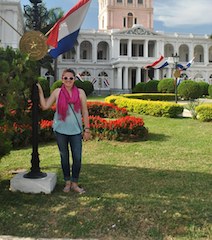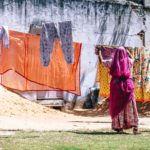South American Machismo: Real or Not?


“Huh? Why not,” I asked.
“Well, because you are a girl and it’s all guys playing. You’ll get hurt. Boys play harder than girls and it won’t be fair if we get stuck with you and no other girls are playing.”
That was not my worst encounter with machismo but it was one of the most common.
Before coming to Paraguay, I had heard about the stereotype of Latino men and their machismo, their strong sense of masculine pride. But, experiencing it firsthand made me realize that it was not what I expected. Sometimes it is hard to handle all of the catcalls and “chh chh chh” noises as I walk down the street, the men saying “wow” or “I love you” as they pass by or having an older man try and stick his hand up my skirt on a crowded city bus.
One time I was asked by a somewhat drunken male if I was a lesbian because he had heard me telling a group of my female friends that I was a feminist.

The worst part, to me, is how ingrained and deeply rooted into the culture the machismo is. The men who express it find it funny when you show any kind of disgust towards what they have done, and other women I have complained to don’t understand why I’m upset because they see it as a normal part of life.
One time I was asked by a somewhat drunken male if I was a lesbian because he had heard me telling a group of my female friends that I was a feminist. Another time, a woman justified this male behavior by telling me that in the War of Triple Alliance, Paraguay lost almost 90% of its male population, thus making men a very hot commodity and giving the remaining men a sense of entitlement and power. If you aren’t up-to-date on South American history, this war took place almost 150 years ago.
Machismo culture is not unique to Paraguay, or even Latin America. But, it’s the countries of South America that carry its biggest stereotype, even though in just as many girls finish school as boys now. In many areas, more and more women join the labor force each year and maternal mortality has dropped dramatically. Many countries including, Argentina, Brazil and Chile have had women presidents, which could definitely make a difference for future generations.
Gender and domestic violence has increased in the past decade in Central and South America with close to one in two women being a victim of violence in their lifetimes.
However, improvements are still needed and in some cases the stereotype holds true and leads to more serious problems. Gender and domestic violence has increased in the past decade in Central and South America with close to one in two women being a victim of violence in their lifetimes.
Having lived in South America for the past two years, I want to make it clear that not all men act this way and I have never experienced anything more serious than the unwanted advances from that older man on the bus. But, as a tourist in South America, you will probably be affected by machismo at one point or another and my advice is to ignore it.
This may go against your instinct, but, trust me, it is the best way to make it stop so you can go on and enjoy your travels through this beautiful continent.
South American Machismo: Real or Not?
Have you traveled to South America? How was your trip? Email us at [email protected] for information about sharing your experience and advice with the Pink Pangea community. We can’t wait to hear from you.
Top photo for South American Machismo: Real or Not? by Unsplash.









Countries that treat women like second class citizen’s should always be labeled as 3rd world. I admire your composure under what US citizen’s would consider abusive and even criminal.
Good info – it’s hard to know sometimes when to react and when to let it go.